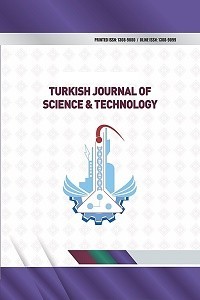A Novel Histological Dataset and Machine Learning Applications
A Novel Histological Dataset and Machine Learning Applications
Classification Computer-aided diagnosis, Histological image, Image processing, Machine Learning,
___
- [1] Xu J, Luo X, Wang G, Gilmore H, Madabhushi A. Deep Convolutional Neural Network for segmenting and classifying epithelial and stromal regions in histopathological images. Neurocomputing 2016; 191: 214-223.
- [2] Mazo C, Bernal J, Trujillo M, Alegre E. Transfer learning for classification of cardiovascular tissues in histological images. Computer Methods and Programs in Biomedicine 2018; 165: 69-76.
- [3] Yang Z, Ran L, Zhang S, Xia Y, Zhang Y. EMS-Net: Ensemble of Multiscale Convolutional Neural Networks for Classification of Breast Cancer Histology Images. Neurocomputing 2019; 366: 46-53.
- [4] Toğaçar M, Özkurt KB, Ergen B, Cömert Z. BreastNet: A novel convolutional neural network model through histopathological images for the diagnosis of breast cancer. Physica A: Statistical Mechanics and its Applications 2020; 545: 123592.
- [5] Wang L, Jiao Y, Qiao Y, Zeng N, Yu R. A novel approach combined transfer learning and deep learning to predict TMB from histology image. Pattern Recognition Letters 2020; 135: 244-248.
- [6] Niemann A, Talagini A, Kandapagari P, Preim B, Saalfeld S. Tissue segmentation in histologic images of intracranial aneurysm wall. Interdisciplinary Neurosurgery 2021; 26: 101307.
- [7] Xu H, Liu L, Lei X, Mandal M, Lu C. An unsupervised method for histological image segmentation based on tissue cluster level graph cut. Computerized Medical Imaging and Graphics 2021; 93: 101974.
- [8] Roberto GF, Lumini A, Neves LA, Nascimento MZ. Fractal Neural Network: A new ensemble of fractal geometry and convolutional neural networks for the classification of histology images. Expert Systems with Applications 2021; 166: 114103.
- [9] McCombe KD, Craig SG, Pulsawatdi AV, QuezadaMarín JI, Hagan M, Rajendran S, Humphries MP, Bingham V, et al. HistoClean: Open-source software for histological image pre-processing and augmentation to improve development of robust convolutional neural networks. Computational and Structural Biotechnology Journal 2021; 19: 4840-4853.
- [10] Sato N, Uchino E, Kojima R, Sakuragi M, Hiragi S, Minamiguchi S, Haga H, Yokoi, H, et al. Evaluation of Kidney Histological Images Using Unsupervised Deep Learning. Kidney International Reports 2021; 6(9): 2445-2454.
- [11] Anisuzzaman DM, Barzekar H, Tong L, Luo J, Yu Z. A deep learning study on osteosarcoma detection from histological images. Biomedical Signal Processing and Control 2021; 69: 102931.
- [12] Kierszenbaum AL, Tres LL. Histology and cell biology: an introduction to pathology in Philadelphia. Elsevier Saunders, 2016. pp. 123, 217, 239.
- [13] Gartner LP, Hiatt JL, Gartner LP. Color atlas and text of histology in Philadelphia: Wolters Kluwer Health/Lippincott Williams Wilkins, 2013. pp.126-148.
- [14] Mescher AL, Junqueira LCU. Junqueira’s basic histology: Text and atlas, New York: McGraw-Hill, 2021. pp.73-98.
- [15] Ovalle WK, Nahirney PC, Netter FH. Netter’s essential histology with correlated histopathology, 2021. pp. 51-71.
- [16] Pawlina W, Ross MH. Histology: A Text and Atlas in Correlated Cell and Molecular Biology,2020. pp.356-404.
- ISSN: 1308-9080
- Başlangıç: 2009
- Yayıncı: Fırat Üniversitesi
Effect of Different Drill Bits on Delamination in Drilling Composite Materials
Multilingual Text Mining Based Open Source Emotional Intelligence
Some Quantum Integral Inequalities Based on Left-Right Quantum Integrals
Mehmet KUNT, Abdul BAİDAR, Zeynep ŞANLI
Active Face Spoof Detection Using Image Distortion Analysis
Automatic Diagnosis of Snoring Sounds with the Developed Artificial Intelligence-based Hybrid Model
Narin ASLAN, Sengul DOGAN, Gonca ÖZMEN KOCA
Sefa KAZANÇ, Canan AKSU CANBAY
Optimized YOLOv4 Algorithm for Car Detection in Traffic Flow
